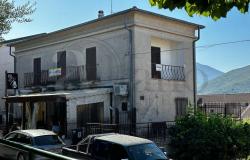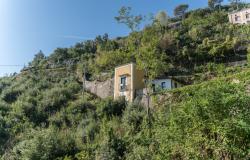 Pompeii's grape harvest looks like being the best ever, producers say.
Pompeii's grape harvest looks like being the best ever, producers say.
"This could be our best wine crop in our seven years here," said Pietro Mastroberardino, whose company gives the world the drink that fuelled an empire.
"The volume could be a bit down but the quality shows every sign of being better than ever," said the winemaker, who bottled the world's first recreation of ancient Roman tipple in 2001.
Grapes from a restored vineyard at the ruined city's sun-drenched House of the Fountain are being picked and the wine will be ready "in a couple of years max", Mastroberardino said.
The newly pressed must is aged for 18 to 24 months in wooden barrels before yielding a "mellow, fruity red," he said.
Thanks to limited-edition auctions of earlier vintages, Pompeii's ancient wine cellars have been restored next to the recreated vineyards.
Since 2003 the production has found a wider market.
The ruby-red, full-bodied wine has been named after one of the buried city's most famous attractions, Villa dei Misteri (Villa of Mysteries).
It has obtained recognition from America's prestigious Food and Wine magazine.
The wine is the fruit of years of research into the grapes grown at Pompeii 2,000 years ago.
Top sommeliers have described the Pompeiian wine as having a "complex, full-bodied, intense, and long-lasting" bouquet, "with spicy after-notes."
The taste has been billed as "involving, balanced, and of considerable breadth and range."
The wine packs a hefty 13.5% alcohol content and should be served at around 18 degrees Centigrade. The Romans watered down their wine during the day but went for the full punch in the evening.
Villa dei Misteri is "the closest we can get to what was drunk in Pompeii's dining rooms and sold in its bars," according to Pompeii's superintendent, Pietro Giovanni Guzzo.
More than 19 centuries after a volcanic eruption from nearby Mount Vesuvius buried the affluent seaside city, a team of scholars combined their knowledge of history and viticulture to produce crops of Piedirosso and Sciascinoso grapes, both ancient varieties.
The Piedirosso grapes are related to a similar variety that has produced a fruity red wine for centuries.
The Sciascinoso vine still grows in surrounding patches of the Vesuvian plains but the wine disappeared from production long ago.
According to project chief Anna Maria Ciarallo, the earth in Pompeii retained its age-old fertility, yielding a "vital" crop.
The vines are planted each year over one hectare of land near Pompeii's Forum Boarium, in an area used for the same purpose in antiquity.
To determine which plants most closely matched the originals, Ciarallo and others leafed through numerous texts written in the 1st century AD by Pliny the Younger, whose adoptive father died in the 79 AD catastrophe.a prominent politician and writer, and Lucius Junius Moderatus, a Roman soldier who preferred farming to the military life.
The experts also gleaned information from artistic depictions of grape harvests and bunches of the fruit, which appear in the most famous homes of the city, as well as a reconstruction of an ancient wine press.
The idea was the brainchild of Pietro Mastroberardino's father Antonio, owner of a relatively small wine-making company in the Avellino area near Naples that bears the family name.
The family had been in the winemaking business for 10 generations in the area.
Antonio, now 77, had always wanted to add to the family's heritage and honour the local culture by creating a new wine with ancient roots in the region. "Writers like Pliny are very precise about viniculture," he said.
In his Historia Naturalis (Natural History), Pliny says: "There is no greater delight in the world than the fragrance of vine in bloom...Where do we start if not from the unrivalled vines of Italy, which outmatch the richness of those in any other country?"











